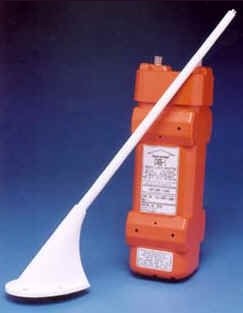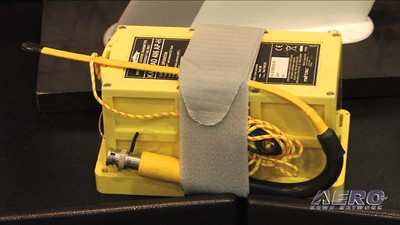AEA's Peri: "60 Day Clock ... Has Not Begun"
 Aviation's alphabet groups have jumped to respond to the threat
of the FCC's proposed ban on the certification, manufacture,
importation, sale, or continued use of 121.5 MHz Emergency Locator
Transmitters. It's being portrayed as a sudden, unexpected ruling,
but that's a matter of perspective.
Aviation's alphabet groups have jumped to respond to the threat
of the FCC's proposed ban on the certification, manufacture,
importation, sale, or continued use of 121.5 MHz Emergency Locator
Transmitters. It's being portrayed as a sudden, unexpected ruling,
but that's a matter of perspective.
Like the California flight instructor regulatory mess of two
weeks ago, the FCC's ELT ruling shows, if anything, the extent to
which the alphabet groups are focused on Washington in general, and
the FAA in particular, and don't have mechanisms in place to
monitor lawmaking at the state level or in other federal
bureaus.
The June 1st ruling appears at first glance to have gone
unnoticed within the aviation industry for no more than about two
weeks. But it actually stems from a Notice of Proposed Rulemaking
dating all the way back to 2006.

Ric Peri, VP for Industry and Regulatory Affairs for the
Aircraft Electronics Association, said in the June 23rd Aero News
Special Feature that the FCC has been inundated with comments on
the action, and has said it will not take any action which forces
pilots to choose between contradictory federal rules from the FCC
and FAA.
He adds that in response to the heads-up from AEA, AOPA and
other groups "...the final rule has not been submitted to the
Federal Register for publication, therefore, the 60-day clock for
implementation of the rule has not begun."

Unlike the California state legislature, the FCC also seems to
be admitting it had inadequate background on the feasibility or
impact of its ruling, which Peri estimates would have forced
200-thousand aircraft through 800 repair stations in a 60-day
period, impossible even if an adequate supply of newer ELTs was
available.
AEA adds that the FCC has clarified its intent to outlaw only
those older ELTs which have only 121.5 MHz capability, not the
newer, 406-MHz ELTs which also transmit on 121.5.
On the AEA website, the association encourages its membership
not to sell C91a ELTs to customers without them knowing the latest
ruling of the FCC, there is no immediate regulatory need for
operators to upgrade their legacy C91a ELTs to the more modern C126
ELTs. For safety reasons, the AEA continues to encourage operators
to upgrade their ELTs to the modern C126 ELT. Operators of the
legacy C91a ELTs should be made aware the usefulness of their ELTs
is very limited, as the justification for the FCC ruling indicates,
and most likely will not provide the search-and-rescue capabilities
they might expect.

Peri says details in this story are developing rapidly. In the
meantime, there appears to be a lesson for all of us. If you see
something happening in your state capital, or in a federal bureau
other than the FCC, and it looks like it might impact aviation,
call the alphabet groups. As huge as the web of government has
grown at all levels, it's not reasonable to assume our industry
advocacy groups will see everything without our help.
 NTSB Final Report: Cessna 177B
NTSB Final Report: Cessna 177B ANN's Daily Aero-Term (05.08.25): Final Approach Fix
ANN's Daily Aero-Term (05.08.25): Final Approach Fix Aero-News: Quote of the Day (05.08.25)
Aero-News: Quote of the Day (05.08.25) ANN's Daily Aero-Term (05.09.25): Estimated (EST)
ANN's Daily Aero-Term (05.09.25): Estimated (EST) ANN's Daily Aero-Linx (05.09.25)
ANN's Daily Aero-Linx (05.09.25)






